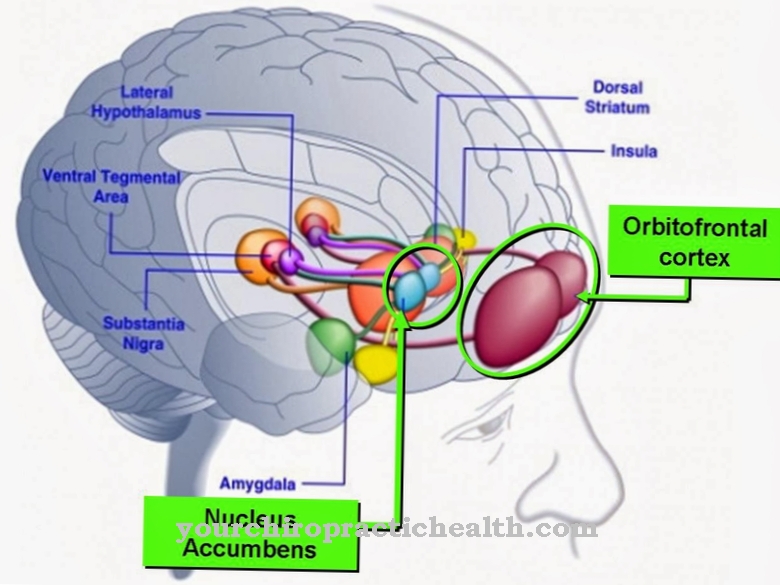With the Skeletal muscles one describes all muscles that are responsible for voluntary movements. This doesn't just include muscles that are directly adjacent to the skeleton. For example, the arm, leg and shoulder muscles also fall under the overgrip.
What are the skeletal muscles?
Muscles that enable active movement of the body are part of the Skeletal muscles. Well-known examples are the tongue, larynx and diaphragm. It is always important that these are muscles that can be controlled arbitrarily. The area of responsibility of the respective muscle is irrelevant. It does not necessarily have to be a muscle that is responsible for moving the skeleton.
It is primarily relevant whether conscious control is possible. The heart muscles are therefore not part of the skeletal muscles. In contrast to the tongue or the larynx, arbitrary control is not possible. Nevertheless, all skeletal muscles have in common that they are connected to the skeleton via tendons or fascia. However, a direct connection is not necessary. The approach can run across several tendons and fasciae.
Anatomy & structure
Depending on the type of muscle, the anatomy and structure can differ. In general, a skeletal muscle consists of muscle fibers that can reach a length of up to 15 centimeters. On the outside, the fibers are surrounded by connective tissue, the so-called fascia. A skeletal muscle is also covered in its entirety by connective tissue.
Septa lead from the connective tissue inwards and combine individual muscle fibers into a bundle. A muscle fiber can itself be divided into a variety of threads. These are myofibrils. They run parallel along a muscle fiber and consist of small units themselves. The units are myofilaments.
These are protein structures that enable muscle contraction through mutual interaction. The arrangement of the myofilaments plays an important role here. In addition, nerves and blood vessels pass through the skeletal muscle. There are also tendons and adjacent bones.
Function & tasks
The skeletal muscles can be divided into a red and white sub-category. The former are muscles with a characteristic red color. They have an increased content of muscle fibers, which promotes oxidative energy production. As a result, movements can be exercised with greater endurance. This type of muscle plays an important role, especially in endurance athletes.
The proportion of muscle fibers in white skeletal muscles is low. This allows muscles to contract faster, which increases the intensity of a movement. Accordingly, the white skeletal muscles are assigned a high priority in the field of strength sports.
Specifically, skeletal muscles are responsible for the statics and motor skills of the body. It is controlled via motor nerves that connect to the brain or the spinal cord. Uninterrupted communication between the muscles and the central nervous system takes place via the release of electrical signals. Depending on the location and the characteristics of the muscle, its area of responsibility can vary greatly.
By and large, the purpose of the skeletal muscles is to keep the body upright and to provide continuous tension. In addition, there is a controlled supply of energy to the body. Specifically, the optimal body temperature should be maintained by exercising muscle work.
If the body temperature has to rise quickly, the skeletal muscles begin to contract briefly and then to relax. The process is repeated several times a second. From the outside, this is perceived as involuntary tremors. It should be noted that only half of the heat generated in this way is used. The rest is responsible for maintaining the muscles themselves.
Furthermore, skeletal muscles have the task of influencing personal well-being. Studies have shown that a skeletal muscle can have an influence on the immune system and lipid metabolism with the help of messenger substances.
Illnesses & ailments
A number of diseases and ailments can occur in relation to the skeletal muscles in the course of life. These can be divided into inflammatory and non-inflammatory forms. The former are complaints with severe pain levels. Inflammation of the skeletal muscles occurs mainly in the extremities. The character of the pain can be compared to a sore muscles.
However, the symptoms increase and can last for several weeks. A muscle injury that has not completely healed can be considered the cause. A bacterial pathogen eventually causes inflammation. The non-inflammatory diseases are more multifaceted.
Muscular dystrophy is particularly widespread. Due to a mutation of the genetic material, defective proteins are incorporated. As a consequence, the muscle mass shrinks, which leads to functional impairment. Mitochondrial myopathy is also serious. This leads to damage to the mitochondria. These are elements of a cell that are responsible for maintaining energy production. In the case of mitochondrial myopathy, it is no longer possible to provide energy in the skeletal muscle cells. Since the muscle cell's energy requirements cannot be met, it is damaged and with it the entire skeletal muscle.
In addition, skeletal muscles can be damaged by bone diseases. A well-known example is osteoporosis. As a result of bone loss, the load conditions within the body change. Severe muscle pain is the result of a disturbed balance. The pain only decreases with the breakdown of the muscles and the connected tendons and fasciae.













.jpg)

.jpg)
.jpg)











.jpg)